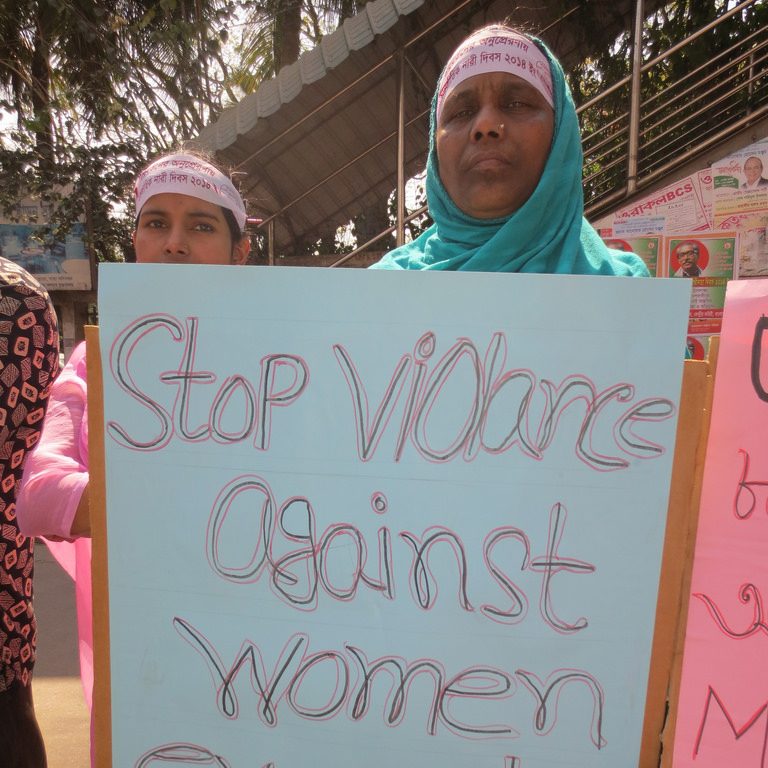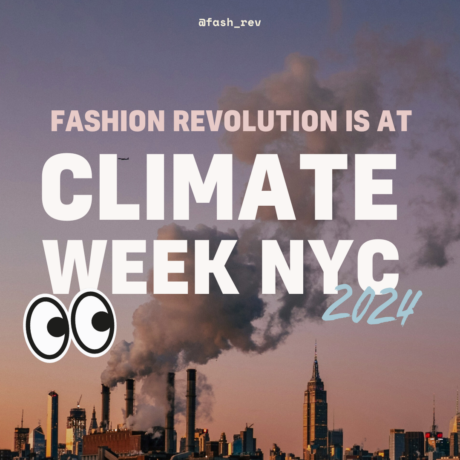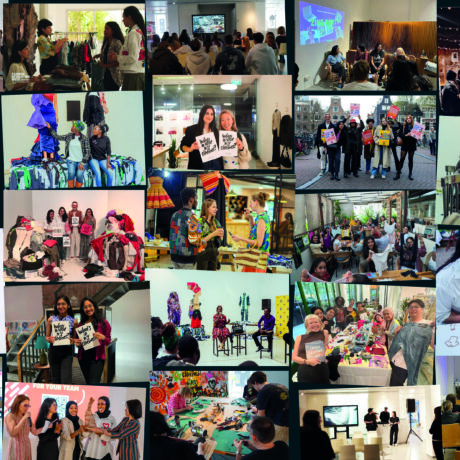Women Garment Workers in Bangladesh Face Gender-Based Retaliation
In the months-long assault on Bangladesh garment workers protesting poverty wages that began in December women have borne the brunt of the retaliation. And it is increasingly evident that gender-based harassment and violence is the weapon of choice to target worker rights activists in Bangladesh.
More than 11,000 union leaders and garment workershave been fired from their jobs in the wake of demonstrations for a fair minimum wage. Blacklists bearing workers’ names and faces hang outside factory gates. Labor activists are pursued in the streets and harassed at their homes. Dozens of workers were arrested, and some remained in jail on trumped up charges for more than a month.
Women face additional forms of intimidation. One worker told the Solidarity Center that in the midst of the January crackdown, men likely hired by the company tore off women’s scarves, a culturally humiliating and degrading action. At one large factory housing a day care center, police charged the building and released tear gas. “There were 13 to 14 children in the room, and they were all injured,” a worker told us, adding that all the women who had children in the center were fired. Women workers were also threatened with rape.
These forms of harassment and violence are particularly insidious as they use fear and shame to reassert unequal power dynamics based on gender. The impact is compounded by the fact that many garment workers stand at the intersection of multiple forms of discrimination—socioeconomic class and their status as migrants to the city—that further sideline their agency and voice.
The protestscame as a surprise to no one. Even with recent adjustments to the minimum wage scale, garment worker wages in Bangladesh remain among the lowest in the region, while the cost of living in urban areas continues to soar. The sector has long been touted as an avenue of economic empowerment for women, but in reality, women workers are segmented into the industry’s lowest-paid positions. They are also regularly confronted with gender-based violence on the job–especially when they try to form unions.
Women workers fuel Bangladesh’s $30 billion-plus garment industry, and they also drive its labor movement. After massive global outcry and trade pressure forced open space for freedom of association following the preventable Tazreen Fashions fire and collapse of Rana Plaza, which killed more than 1,200 garment workers, dynamic women leaders have been instrumental in organizing more than 500 factory unions. Collectively, they are demanding better wages and working conditions. And that scares their powerful and politically connected bosses.
Collective bargaining begins to level the gross power imbalances between workers and employers, and when women workers are at the bargaining table, it also challenges gender inequalities in the workplace. It shakes the foundation of the global apparel industry’s business model, which exploits gender norms that devalue women to justify paying poverty wages and cutting corners on occupational safety and health. For garment manufacturers, the only thing more threatening to their modus operandi than workers with a voice, is women workers with a voice.
Just as Bangladesh has made progress on women’s health and education indicators, the country must also uphold the rights of all workers, particularly women, to assemble peacefully, form or join unions, and negotiate for basic needs, like the ability to earn a living with dignity in a factory free of gender-based violence.
It is also time for the massively profitable apparel brands—which have long benefitted from gender disparities to drive down costs—to get serious about endemic violence against women and anti-unionism in their supply chains. These corporations often base marketing campaigns on images of strong and diverse women. They can’t have it both ways. Brands need to be as diligent in monitoring and mitigating gender-based violence in the workplace as they are with other aspects of their business, and they need to commit resources, make changes in policy and practice and directly negotiate with workers to do so. Good-hearted ”social responsibility” programs with no enforcement mechanism and no binding agreements are not going to cut it. Gender-based violence is about power, and it’s not going to end until workers can freely organize and bargain collectively to take that power back.









